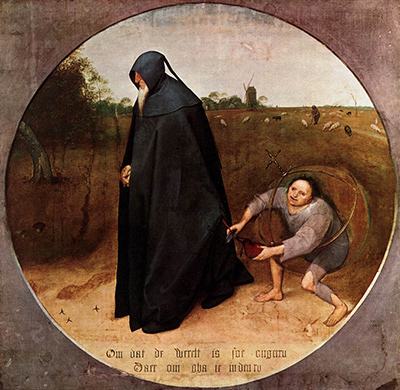Pieter Bruegel the Elder painted The Misanthrope in 1568 with the tempera technique on canvas.
Tempera is color pigments mixed with a glutinous, water-soluble material that acts like a binder to create a permanent, fast-drying paint.
Sometimes egg yolks were used and were then called egg tempera. This would have helped preserve the painting, which can be found at the National Museum of Capodimonte in Naples, Italy.
A misanthrope is a person who does not like society and wants to separate themselves from it.
The older man in the black cloak is the misanthrope in this painting and his feelings are described in the inscription on the bottom that reads: "Because the world is perfidious, I am going into mourning."
In other words, the hooded and cloaked figure mourns the deceit and faithlessness of the world.
The deception referred to is shown in the painting through the smaller figure as it cuts the coin purse off the other figure.
Even though the elderly man has already realized the ugly side of the world, he is further betrayed and perhaps does not even realize the thief as he is so wrapped up in his sadness.
He also does not notice the small caltrops, or thorns, laying in his path that are also meant to hurt him.
Art historians believe the misanthrope is meant to be juxtaposed with the shepherd in the background.
It is believed Bruegel put them in the same painting because, unlike the man in the black cloak, the shepherd is doing his duty.
While the misanthrope wants to leave the world and his society, which is fairly impossible, the shepherd remains true to his duties.
This painting is relevant today with its message despite over half of a century passing between its creation and the present.




